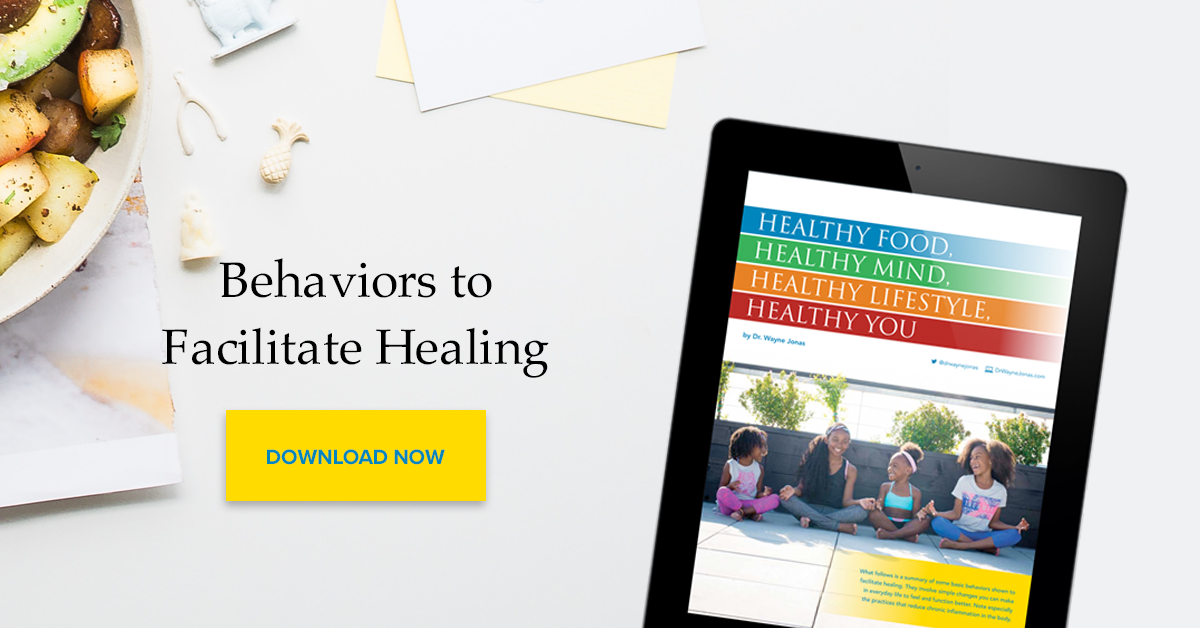The healing process is understood and applied in many traditions and by wise physicians today but has been obscured by modern medicine’s obsession with external agents, such as pills, procedures, and supplements. While many of these technologies and treatments are extremely valuable, this hyperfocus and the economic rewards driving them has largely squeezed out the essence of what medicine is all about—how to guide a person to healing, wholeness, and well-being.
There is a growing body of evidence to support “alternative” medicine recommendations. Two excellent sources are the National Institutes of Health’s National Center for Complementary and Integrative Health and the evidence database from Cochrane which includes work on complementary and alternative medicine.
Large medical centers, including Stanford, Harvard, Yale, MD Anderson Cancer Center, Duke, the University of Arizona, Georgetown, and George Washington schools of medicine, have embraced integrative medicine as an evidence-based approach. A government-funded 2010 survey of more than 700 U.S. hospitals found that 49 percent of respondents primarily offered CAM because of patient demand, while another 24 percent said such services reflected their organizational mission.
Other motivations included clinical effectiveness (45 percent), attracting new patients (41 percent), and differentiation from competitors (36 percent).
More than 70 U.S. academic health centers with integrative medicine programs are members of the Academic Consortium for Integrative Medicine & Health. There is a corresponding European Society of Integrative Medicine and a global International Society for Complementary Medicine Research.
There is even an integrative medicine specialty designation through the American Board of Physician Specialties.
In addition, the National Institutes of Health (NIH) has funded the National Center for Complementary and Integrative Health, which is specifically focused on complementary and integrative health practices.
The American College of Physicians, the Department of Defense and Veterans Health Administration, and the Joint Commission have added CAM approaches to their practice guidelines especially in the area of pain management.
An estimated one in three U.S. adults uses some form of CAM, primarily in conjunction with conventional medicine rather than as a substitute. During 2007 US adults spent $33.9 BILLION dollars on out of pocket costs for CAM modalities.
Global use varies from 20% to 80% depending on the country.
However, even if a practice is shown to be safe and effective, it is not wise to merely substitute a medication with a CAM approach without a doctor’s guidance. It is critical to integrate alternative and self-care within your current system of care. The term “integrative care” surfaces as a buzzword in the industry; however many healthcare systems struggle to provide care that combines the best of traditional and non-traditional medicine with self-care.
Mind-body practices are a common alternative practice. Mind-body techniques have been shown to be helpful in the treatment of cancer symptoms, high blood pressure, asthma, coronary heart disease, obesity, pain, insomnia, diabetes, fibromyalgia and a host of other ailments.
Most mind-body therapies evoke a relaxation response that directly counters the stress response. Mind-body practices increase brain connectivity between the left and right hemispheres, enhance cerebral blood flow, enlarge gray matter in areas associated with memory, learning, and self-regulation, and alter immune function (Newberg et al., 2010; Vestergaard-Poulson et al., 2009; Davidson et al., 2003).
Multi-Modal Practices
A systematic review of 116 randomized controlled trials (RCTs) of multi-modal mind-body-spirit training programs (e.g., guided imagery, breath work, progressive muscle relaxation, relaxation response, mindfulness, yoga) found statistically significant improvements on stress, distress, anxiety, coping, burnout and trauma-related thoughts, and post-traumatic stress disorder (PTSD) symptoms (Crawford et al., 2013)
The clinical populations that were helped include adult and pediatric patients with rheumatoid arthritis, chronic headaches, cancer, heart disease, HIV, heart surgery, anxiety, depression, PTSD and schizophrenia.
Mindfulness
Mindfulness is one of the most effective and well-researched mind-body skills. More than 2,500 studies in the past 20 years have demonstrated the positive impact of mindfulness on physical, emotional, cognitive and psychological well-being.
Mindfulness-Based Stress Reduction (MBSR)
A meta-analysis of 20 controlled and observational studies of MBSR in diverse populations found significant effects on mental and physical outcomes in both clinical and nonclinical populations. Effects included decreasing emotional distress and anxiety, improving pain perception, and increasing well-being and quality of life. Clinical populations that were helped included patients with fibromyalgia, cancer, heart disease, depression, chronic pain, anxiety, obesity and binge eating (Grossman, Niemann, Schmidt, & Walach, 2004).
In another study, a review of 21 RCTs found MBSR is a useful method for improving mental health and reducing symptoms of stress, anxiety, and depression. The authors recommended it in medical disease management to improve health-related quality of life (Fjorback, Arendt, Ornbøl, Fink, & Walach, 2011).
For additional therapies including acupuncture, nutrition, yoga and massage, I provide evidence-based resources known as Healing Tools.
Originally published on Quora.
Take Your Health Into Your Own Hands
Drawing on 40 years of research and patient care, Dr. Wayne Jonas explains how 80 percent of healing occurs organically and how to activate the healing process.



